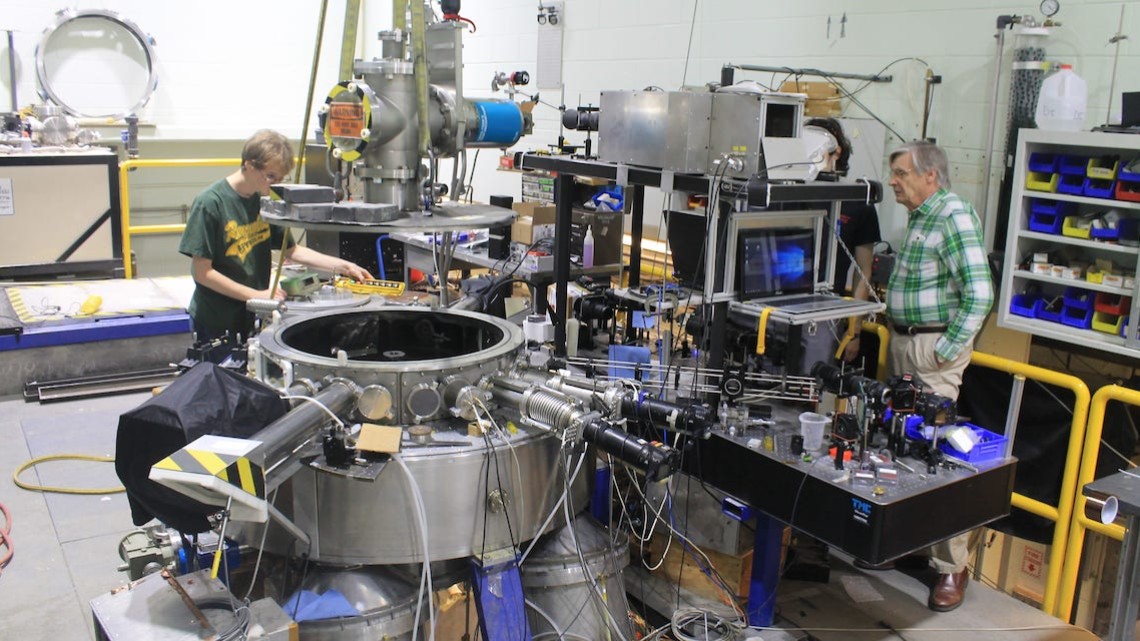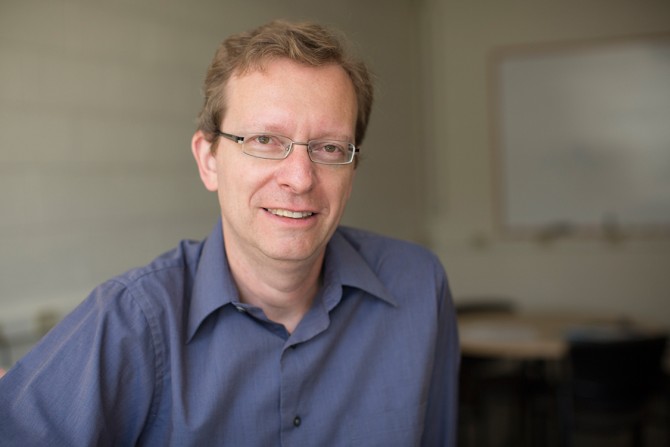
Bruce Kusse (right), professor of applied and engineering physics, works with students in the Laboratory of Plasma Studies.
News directly from Cornell's colleges and centers
Gennady Shvets to lead Laboratory of Plasma Studies
By Syl Kacapyr
For nearly six decades, Cornell’s Laboratory of Plasma Studies (LPS) has remained at the forefront of plasma science – a tradition its incoming director, Gennady Shvets, professor of applied and engineering physics, plans to continue while also broadening the lab’s research capabilities.
Shvets was selected as the lab’s next director and will assume the leadership role on Jan. 1, 2023. His expanded vision for the lab comes at an opportune time, as recent developments in fusion science and an international focus on climate solutions have placed a renewed spotlight on how energy from high-temperature plasma – a state of matter in which atoms are ionized and their electrons become free – can be harnessed.
“There's a lot of interest in clean energy, and fusion is sort of seen as the ultimate source of clean energy,” said Shvets, noting that LPS has long been considered a leader in a subset of fusion research, using pulsed-power machines and state-of-the-art diagnostic tools to study plasma. “We can also capitalize on opportunities to expand into other translational applications of plasma physics that are coming to fruition, and some of them have to do with biomedical applications.”
Proton therapy, for example, has gained recent interest as a type of radiation that uses protons to treat cancer rather than X-rays. Some of the laser sources required for generating energetic protons are also relevant for laser fusion, according to Shvets, who said LPS has potential to become one of the few facilities capable of conducting the basic biological research needed to study proton therapy in living models.
“Gennady’s vision to broaden the excellence of LPS matches perfectly with Cornell Engineering’s priority research directions in energy and translational biotechnology,” said Lynden Archer, the Joseph Silbert Dean of Engineering. “Expanding the lab’s capabilities will present new opportunities for collaboration across campus and potentially with medical schools.”
Shvets noted that collaborations could also include more industry partners, particularly companies with an interest in fusion science, or companies that need a pipeline of scientists educated in plasma-related fields.
“This will be a big push for us,” said Shvets, who added that LPS has populated pulsed-power research programs across the country, including leadership positions at places like Sandia National Laboratories and Los Alamos National Lab.
LPS is currently led by Bruce Kusse, professor of applied and engineering physics, together with David Hammer, professor of electrical and computer engineering, who have been involved with the lab since shortly after its founding.
“We are looking forward to Gennady joining the laboratory and working with him to continue our current activities as well as to expand operations into new areas of plasma physics,” Kusse said.
Added Hammer: “Gennady has the intellectual capabilities and skills to broaden the plasma physics and fusion technology space that Cornell is in. We’re excited that he and Dean Archer are supportive of the lab and its future, and that it’s being positioned to continue thriving.”
Media Contact
Get Cornell news delivered right to your inbox.
Subscribe

